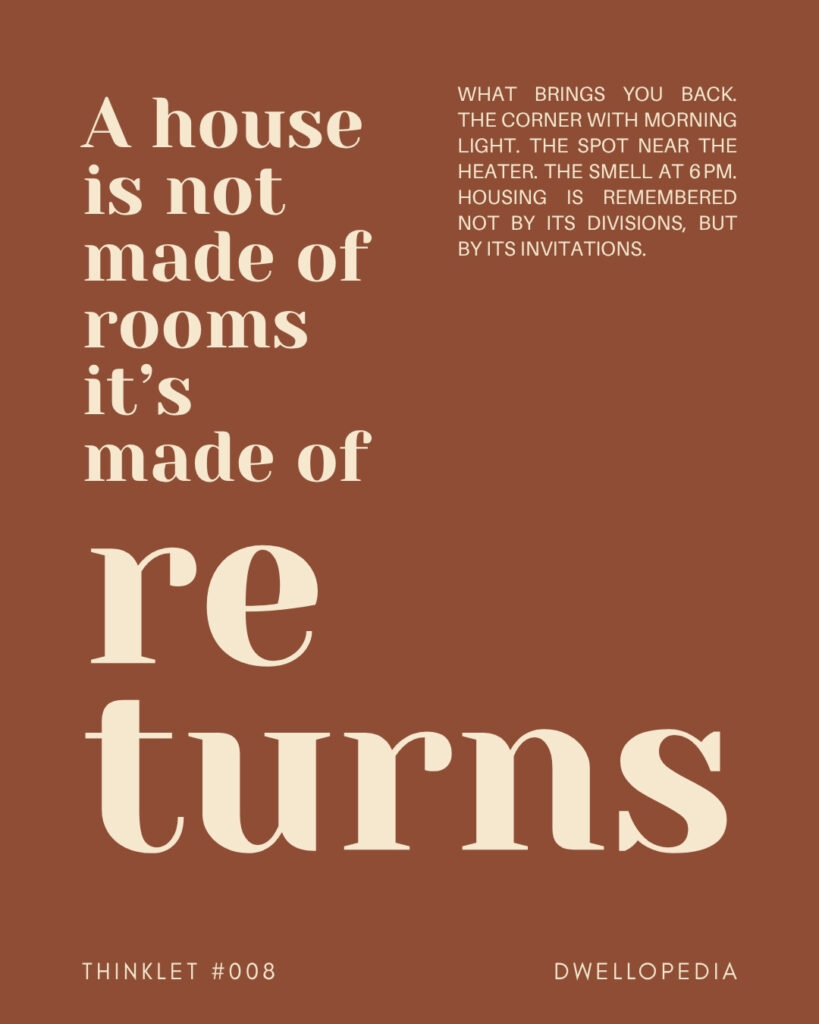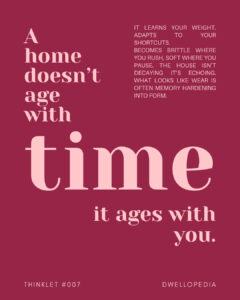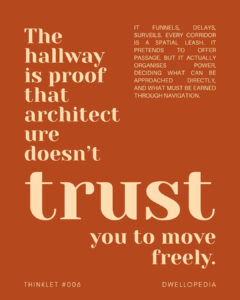A house is often described by its rooms—the bedroom, the kitchen, the living room—as if these divisions define its very essence. Yet, there is a subtler, more profound truth whispered by our daily rhythms: a house is not made of rooms—it’s made of returns. The spaces we find ourselves drawn back to, time and again, shape the soul of our dwelling far more than its walls or partitions.
What draws us back? The corner touched by morning light just so, the chair near the heater that captures winter’s warmth, the faint scent that fills the air at six o’clock each evening. These are not incidental details but invitations woven into the fabric of our lives. Our homes become constellations of moments—rituals repeated, paths circled back, habits inscribed into space—creating gravity where walls merely contain.
How do these loops of return shape our experience of home? How do they transform architecture from static enclosure into living, breathing choreography? What does it mean to dwell in a place defined not by division but by repeated gathering, by the magnetic pull of familiar moments?
This thinklet invites architects, students, and thinkers to see housing anew—not as a collection of rooms but as a landscape of returns. It encourages a contemplation of the emotional and existential qualities that transform space into home.
Housing Unfolded: Transforming the Practice
To design housing as a constellation of returns challenges entrenched architectural habits. The traditional focus on room counts, spatial zoning, and functional programming gives way to an attentiveness to lived experience and temporal rhythms. How might this shift reshape the very practice of housing design?
Imagine a home where thresholds, corners, and niches are not mere passageways or leftovers but intentional places of return, invitation, and repose. How might architects design light—natural and artificial—as a moving presence that marks time and beckons repeated visits? The shifting glow of sunlight across a window seat, the warmth that gathers in a hearth, the changing shadows in a hallway—these ephemeral phenomena become anchors for habit and memory.
Materials gain renewed importance in this approach. Textures that invite touch, surfaces that age gracefully under the imprint of repeated presence, colors that shift with changing light—all contribute to spaces that reward return. How can architectural choices create environments that age with inhabitants, becoming more meaningful through repetition and ritual?
The spatial organization itself invites rethinking. Rather than strict hierarchies and linear flows, homes might embrace loops, spirals, and circular paths that encourage re-visiting and dwelling. How might density and intimacy be choreographed to nurture these loops, balancing privacy and connection?
Socially, designing for return reimagines community and belonging. Rituals of gathering and retreat are spatially enabled, making home a stage for relational dynamics. How can housing design foster belonging through the choreography of return, creating spaces that invite not just inhabitation but repeated, meaningful engagement?
This perspective demands a transformation of design thinking—from static object-making to dynamic process facilitation. Architects become caretakers of lived time, attentive to how spaces accumulate meaning through repeated use. How might architectural education and practice adapt to center temporality, ritual, and emotional resonance?
At larger scales, this concept challenges urban and neighborhood design to consider not only access and movement but also the invitations embedded in place—pathways, plazas, and parks that become magnets of return and memory. How might cities themselves be reimagined as constellations of return, fostering belonging and continuity amid change?
In this unfolding, housing design transcends enclosure to become a poetic landscape of habitual return—a spatial meditation on dwelling and being.
Beyond Boundaries: Layered Understandings
The idea that a house is made of returns reverberates through diverse lenses, revealing complexity and richness.
Sustainability invites us to consider the rhythms of time and use embedded in architectural life cycles. How might designing for repeated return promote durability, adaptability, and ecological sensitivity? Could the choreography of habitual use inform resource efficiency and renewal?
Social equity highlights how access to spaces of return shapes belonging and inclusion. How might housing design enable diverse communities to create their own rituals and anchors, supporting cultural expression and resilience? What barriers exist to such relational dwelling, and how might they be dismantled?
Memory and identity find powerful expression in the spaces of return, where personal and collective histories are inscribed in texture and light. How can architects honor these layers of time and experience, crafting homes that carry forward legacies?
Technology offers new modalities for mapping and enhancing return—digital archives of use, responsive lighting that tracks habit, virtual memory overlays. Yet how do we balance these tools with the sensory and poetic richness of physical space?
Each perspective refracts the thought into new dimensions, challenging architects to embrace ambiguity, multiplicity, and relational depth. The house as constellation of returns is a living metaphor for architecture as experience, memory, and connection.
Conclusion
To say a house is not made of rooms but of returns is to invite a poetic rethinking of dwelling. This thinklet plants a seed for architects and thinkers to cultivate homes that resonate through time—spaces defined by habitual invitation, repeated presence, and relational memory.
In the corners bathed in morning light, in the warmth that beckons each winter, in the familiar scent at twilight, architecture becomes not a container but a living choreography. The house ages with its inhabitants, becoming more than structure—a constellation of moments where belonging gathers and deepens.
As you carry this thought forward, consider: How might your designs craft invitations to return, spaces that reward repeated dwelling and nurture connection? How can architecture become a keeper of memory, a stage for life’s recurring rhythms?
The power of this thinklet lies in its open-ended wonder. What constellations of return will your architecture compose in the lives it holds?







